Sole e gusto di Sicilia
WE ARE PROUD OF OUR SICILIAN LINE MADE WITH TYPICAL VARIETIES OF PULSES FROM OUR ISLAND. THIS LINE IS THE SYMBOL OF FOOD CULTURE AND TRADITION FROM SICILY

SMALL GREEN SICILIAN LENTILS
These lentils grow in the clayey and calcareous soils of Sicily, where the Mediterranean climate transmits its unique aromas and flavors. Green lentils are the oldest legume cultivated by man, has always been considered the meat of poor people. They are excellent in soups with vegetables, pasta or rice adding a drizzle of extra virgin olive oil. In these recipes, they become a complete dish for healthy eating.

RED SICILIAN LENTILS
Split peas are legumes of green color and semi-spherical shape. The high rate of simple sugars and the absence of bitter principles contained in other legumes give them a very sweet taste. They are rich in Energy and used in soups.

SPLIT PEAS
Split peas are legumes of green color and semi-spherical shape. The high rate of simple sugars and the absence of bitter principles contained in other legumes give them a very sweet taste. They are rich in Energy and used in soups.

DECORTICED FAVA BEAN
Dried decorticated fava beans are very rich in protein. They need to be soaked in cold water for about eight hours; they can be used in soups and pasta. Macco is a famous Sicilian and traditional dish: a very tasty soup with wild fennel and fava bean.
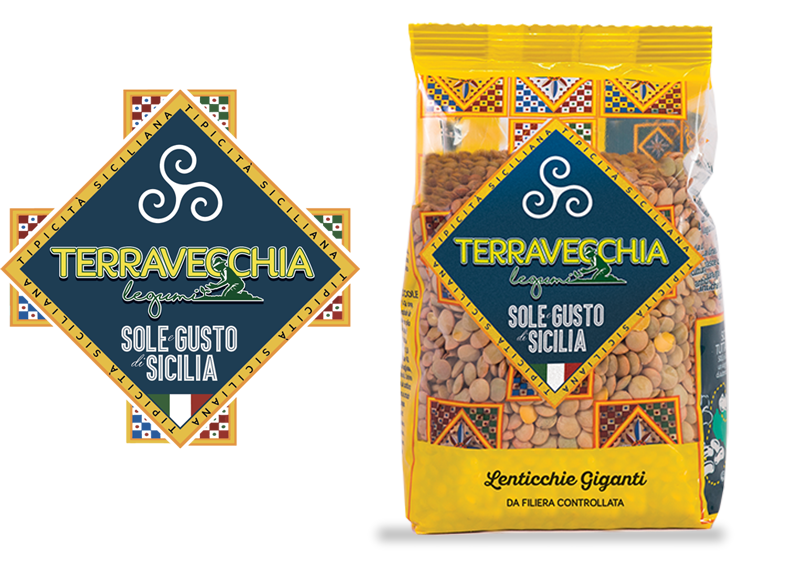
BIG LENTILS
Big lentils grow in the clayey and calcareous soils of Sicily, where the Mediterranean climate transmits its unique aromas and flavors. Lentils are the oldest legume cultivated by man and has always been considering the meat of poor people. They are excellent in soups with vegetables, pasta or rice adding a drizzle of extra virgin olive oil. In these recipes, they become a complete dish for healthy eating.

PASCIA’ SICILIAN CHICKPEA
Pascià Chickpea is one of the oldest legumes used in the Middle and Far East, the name itself evokes the Arab atmosphere in which it has its roots; this variety grows spontaneously in the Mediterranean basin and all over Sicily. This variety has medium-sized wrinkled seeds that remain intact even after cooking. Perfect as a soup or as a side dish, they are also excellent for pasta seasoning.

BORLOTTO BEAN
Borlotti beans are very famous and cultivated since ancient times. They are well known in Italy and used for the preparation of countless dishes. The Borlotto bean is rich in fiber and grow up even in Sicily in small quantities.

CHICKPEA FLOUR
The first connoisseurs who create flour from chickpeas were the Arabs, who dominated Sicily.
This flour was mixed with water and cooked over a fire, the result was not particularly tasty; but in Palermo some years later people start cooking and frying a thin sheet of the previous mixture creating the first “panella” a typical Sicilian street food.
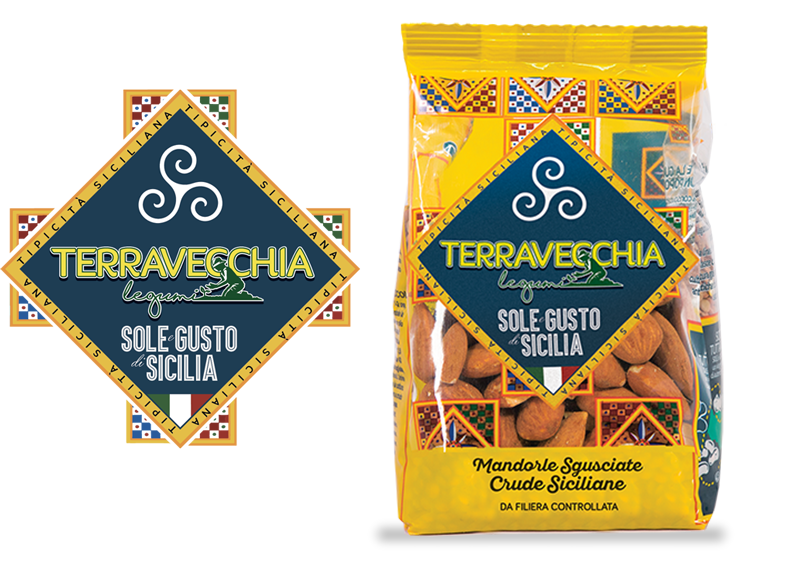
SICILIAN ALMOND
A long agricultural and food tradition links Sicily to almond. It was the Phoenicians who introduced it into the island and the Arabs who obtained sweets and drinks from it. Despite the strong competition from foreign products, Sicilian almond is unique: it stands out not only for its unmistakable flavor and healthy values but also for its hard shell that well protects the seed from pests.
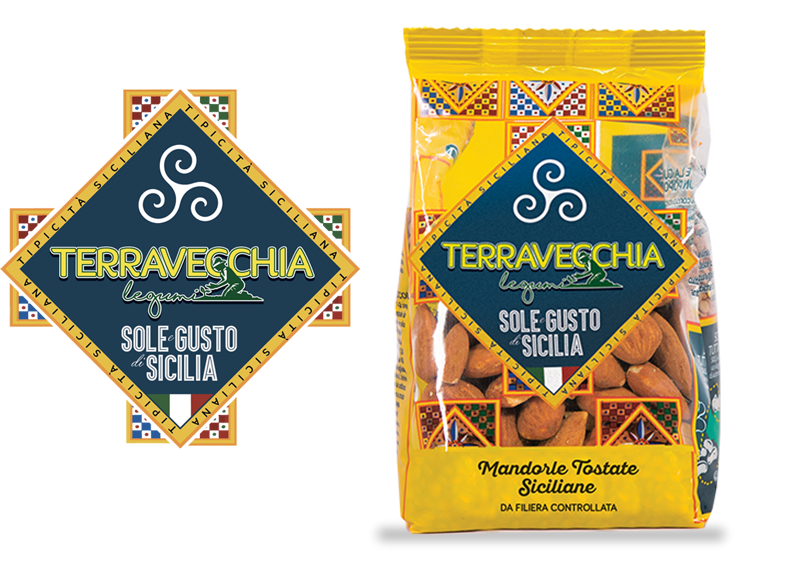
SICILIAN TOASTED ALMOND
Sicilian almonds are highly appreciated for their sweetness and the intense aroma. Toasted almonds are excellent as a snack before practicing sport, at work or during your happy hours.
BADDA BEAN BLACK
In the Polizzi Generosa valley grows the Badda bean and takes its name from the characteristic ball shape (Badda in Sicilian dialect). There are two ecotypes, similar in shape and organoleptic characteristics but with different colors: the badda white bean, ivory colored with pink / orange spots; black badda bean, ivory colored with dark purple / black spots. Badda is a savory bean with hints of chestnut and almonds. During the cooking, it becomes creamy and does not flake.
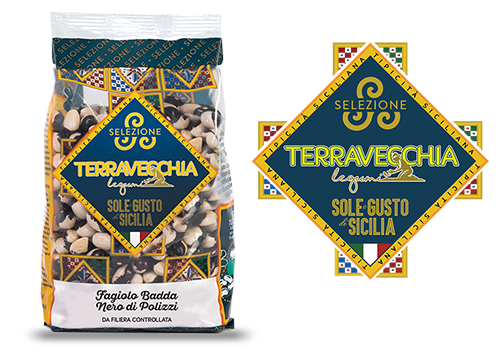
BADDA BEAN WHITE
In the Polizzi Generosa valley grows the Badda bean and takes its name from the characteristic ball shape (Badda in Sicilian dialect). There are two ecotypes, similar in shape and organoleptic characteristics but with different colors: the badda white bean, ivory colored with pink / orange spots; black badda bean, ivory colored with dark purple / black spots. Badda is a savory bean with hints of chestnut and almonds. During the cooking, it becomes creamy and does not flake.

LEONFORTE DI SICILIA BEANS
Leonforte beans are an extraordinary and precious food typical of the Sicilian territory and have very ancient origins. This broad bean has seeds of giant dimensions, not very floury but very tasty and it does not require very long cooking times. The cultivation is handy and traditional.

BLACK LENTIL OF SICILY
The black lentil, a rare pearl of the Sicilian territory, is an ancient and rare variety, which was cultivated for the particular resistance to drought. Thanks to this resistance and the strong concentration of iron, fibers and other substances, this lentil is particularly tasty. After cooking, it is suitable with fish dishes.

LENTICCHIA FROM VILLALBA
In the heart of Sicily, in the southeast of Madonie, Villalba village is born. The unique Villalba lentils has grown in the clayey soils typical of the area. This lentil is high in protein and iron and low in phosphorus and potassium, in order to give it an intense and particular flavor and make it solid during the cooking; this lentil has very large seeds with bright shades of green compared to the other types.

GIANT CICERCHIA OF SICILY
Cicerchia is one of the oldest legumes in the world. It is part of the Sicilian peasant tradition and nutrition. It grows in difficult conditions even on poor soils and resists to drought; it has a very particular taste. Nowadays people appreciate and use cicerchia in many tasty dishes.
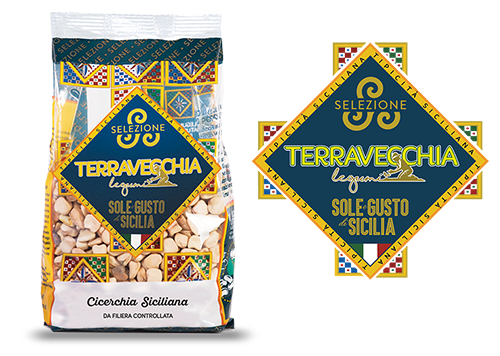
COSARUCIARU BEAN
In the heart of the Sicilian baroque, in the province of Scicli, the Cosaruciaru bean grows. Its sweet taste gives the name “cosa ruci” in dialect (sweet thing). It is cream-colored with brown speckles; its cooking is rapid (after soaking) and the peel is very soft. This bean fits well soup in combination with fish and shellfish.
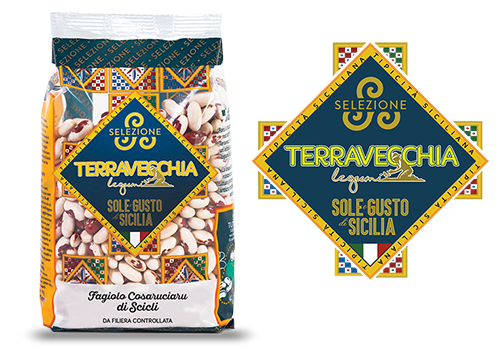
USTICA LENTILS
The smallest lentils in Italy grow on a small Sicilian island called Ustica. Dark brown in color with delicate greenish hues, they have always been cultivated on the lava and fertile soils and the technique has always been completely by hand. Ustica lentils are a fundamental ingredient for local cuisine. The two classic recipes are soup, enriched with local vegetables and flavored with basil or wild fennel, and pasta with lentils, prepared with broken spaghetti. Tender and tasty, they are an easy food to cook, do not require soaking and cook in only 45 minutes.

500g
Sicilian chickpeas our for panelle
400g
Sicilian pascià chickpeas
Cicerchia Siciliana
White Badda bean from Polizzi
Black badda bean from Polizzi
Sicilian Borlotto bean
Cosaruciaru bean
Sicilian Red bean
Sicilian shelled fava bean
Lentils from Villalba
Sicilian Giant lentils
Lentils from Ustica
Sicilian Black lentils
Sicilian Small lentils
Sicilian Red lentils
Sicilian broken peas
300g
Fava bean from Leonforte
200g
Sicilian almond
Sicilian toasted almond











